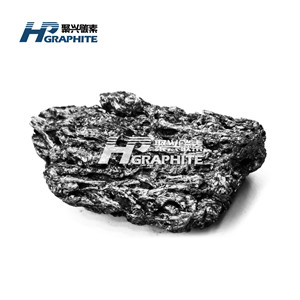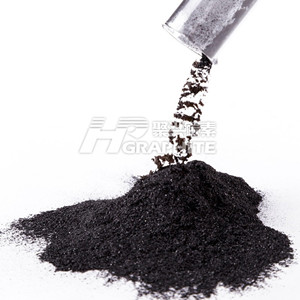What is carbon?

What is carbon?
Carbon and graphite materials are non-metallic solid materials dominated by carbon elements, in which carbon materials are basically composed of non-stone carbon materials, while graphite materials are basically composed of graphite carbon materials. For simplicity, carbon and graphite materials are sometimes collectively referred to as carbon materials.
Carbon products can be divided into graphite electrode, carbon block, graphite anode, carbon electrode, paste, electric carbon, carbon fiber, special graphite, graphite heat exchanger, etc. Graphite electrodes can be divided into regular power graphite electrodes according to the allowable current density. High power electrode, ultra-high power electrode. Carbon blocks can be divided into blast furnace carbon blocks, aluminum carbon blocks, electric furnace blocks, etc. Carbon products can be divided into carbon products, graphite products, carbon fiber and graphite fiber according to the processing depth. According to different raw materials and production processes, carbon products can be divided into graphite products, carbon products, carbon fiber, special graphite products, etc. According to the ash content, carbon products can be divided into multi ash products and low ash products (ash content less than 1%).
The national technical standards and ministerial technical standards of carbon products in China are classified according to different uses and different production processes. This classification method basically reflects different uses and different production processes of products, and is also convenient for accounting. Therefore, this classification standard is also adopted in its calculation method. The classification and description of carbon products are introduced below.
1、 Carbon and graphite products
It is mainly made of petroleum coke and needle coke as raw materials and coal tar pitch as binder through calcination, batching, kneading, molding, baking, graphitization and machining. It is a conductor that releases electric energy in the form of electric arc in the electric arc furnace to heat and melt the furnace charge. According to its quality indicators, it can be divided into regular power, high power and ultra-high power. Graphite electrodes include:
(1) Regular power graphite electrode. Graphite electrode with current density lower than 17A/cm 2 is allowed to be used. It is mainly used in regular power electric furnaces for steelmaking, silicon smelting, yellow phosphorus smelting, etc.
(2) Oxidation resistant coated graphite electrode. The graphite electrode with a layer of oxidation resistant protective layer is coated on the surface to form a protective layer that is both conductive and resistant to high temperature oxidation, so as to reduce the electrode consumption during steelmaking.
(3) High power graphite electrode. It is allowed to use graphite electrode with current density of 18 ~ 25A/cm 2, which is mainly used in high-power electric arc furnace for steelmaking.
(4) Ultra high power graphite electrode. Graphite electrode with current density greater than 25A/cm 2 is allowed. It is mainly used in ultra-high power steelmaking electric arc furnace.
(Ⅱ) Graphite anode
It is mainly made of petroleum coke as raw material and coal tar pitch as binder through calcination, batching, kneading, molding, baking, impregnation, graphitization and machining. It is generally used as conductive anode of electrolytic equipment in electrochemical industry. Include:
(1) Various chemical anode plates.
(2) Various anode rods.
(Ⅲ) Special graphite
It is mainly made of high-quality petroleum coke as raw material and coal tar pitch or synthetic resin as binder through raw material preparation, batching, kneading, pressing, crushing, re-kneading, molding, multiple baking, multiple invasion, purification, graphitization and machining. It is generally used in aerospace, electronics and nuclear industries.
It includes spectral pure graphite, high purity, high strength, high density and pyrolytic graphite.
(Ⅳ) Graphite heat exchanger
The impermeable graphite product for heat exchange is made by processing the artificial graphite into the required shape, and then impregnating and curing with resin. It is a heat exchange equipment processed with the artificial impermeable graphite as the matrix, which is mainly used in the chemical industry. Include:
(1) Block hole heat exchanger;
(2) Radial heat exchanger;
(3) Falling film heat exchanger;
(4) Tubular heat exchanger.
(Ⅴ) Carbon electrode
The conductive electrode is made of carbonaceous materials such as anthracite and metallurgical coke (or petroleum coke) as raw materials and coal tar pitch as binder. It is not suitable for electric furnace smelting high-grade alloy steel. Include:
(1) Multi ash electrode (electrode produced from anthracite, metallurgical coke and asphalt coke);(2) Regenerated electrode (electrode produced from artificial graphite and natural graphite);
(3) Carbon resistance rod (carbon grid brick);
(4) Carbon anode (pre-baked anode produced from petroleum coke);
(5) Baked electrode blank.
(Ⅵ) Carbon blocks
It is made of anthracite and metallurgical coke as the main raw materials and coal tar pitch as the binder through raw material preparation, batching, mixing, molding, baking and machining. Blast furnace carbon block is used as high temperature and corrosion resistant material for building blast furnace lining; Bottom carbon block, side carbon block and electric furnace block are used for aluminum electrolytic cell and ferroalloy electric furnace. Include:
(1) Blast furnace carbon block;(2) Aluminum groove carbon block (bottom carbon block and side carbon block);
(3) Electric furnace carbon block.
(Ⅶ) Carbon paste
It is made from petroleum coke, anthracite and metallurgical coke with coal tar pitch as binder. Some electrode pastes are used as conductive electrodes in various continuous self-baking electric furnaces; Some anode pastes are used for continuous self-baking aluminum grooves as conductive anodes; Some are used as filler for blast furnace masonry and coarse and fine seam paste of refractory slurry. Although the purpose of self-baking carbon block used in blast furnace is different, it is similar to the production process of paste products and is temporarily classified into paste products. Include:
(1) Anode paste;(2) Electrode paste (including standard and non-standard electrode paste);
(3) Bottom paste (including more ash and less ash bottom paste);
(4) Closed paste (including more ash and less ash closed paste);
(5) Other pastes (including coarse seam paste, fine seam paste, self-baking carbon brick, etc.).
(Ⅷ) Non-standard carbon and graphite products
This refers to various special-shaped carbon and graphite products made of carbon and graphite products after further processing. Including shovel anode, fluorine anode and various specifications of crucibles, plates, rods, blocks and other special-shaped products.
(Ⅸ) Impervious graphite
This refers to the resin and a variety of organic matter impregnation, processing and made of various types of graphite, including the matrix of the heat exchanger.
(Ⅹ) Electric carbon products
This refers to carbon rods, electric brushes and other products.
2、 Carbon fiber
It includes all kinds of carbon fiber, graphite fiber, pre-oxygen wire, carbon cloth, carbon belt, carbon rope, carbon felt and its composite materials. Among them, carbon fiber is the fiber with carbon content higher than 93%. It is made of acrylonitrile fiber, viscose fiber and pitch fibre by carbonization. Heat treatment temperature from low to high can be made into heat-resistant fiber, carbon fiber and graphite fiber respectively, contact us for more carbon materials information.
No related results found










0 Replies